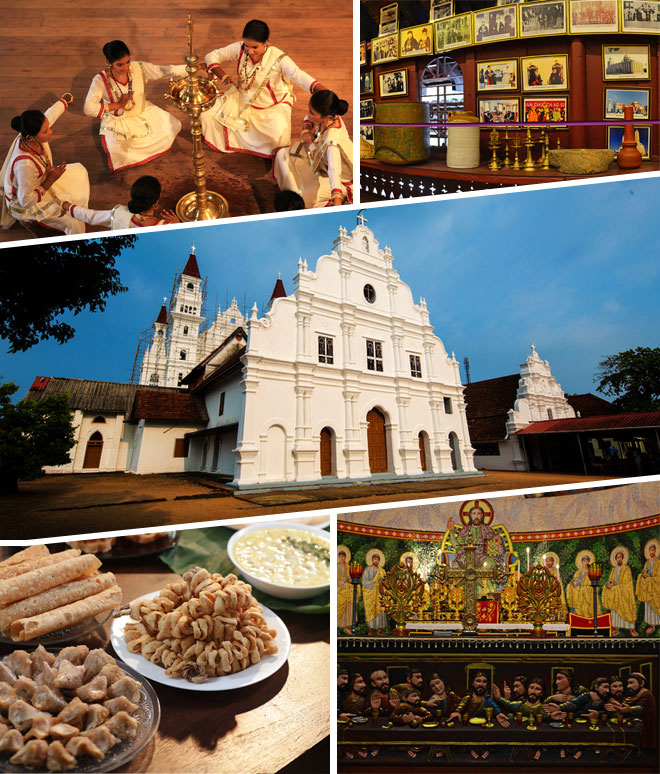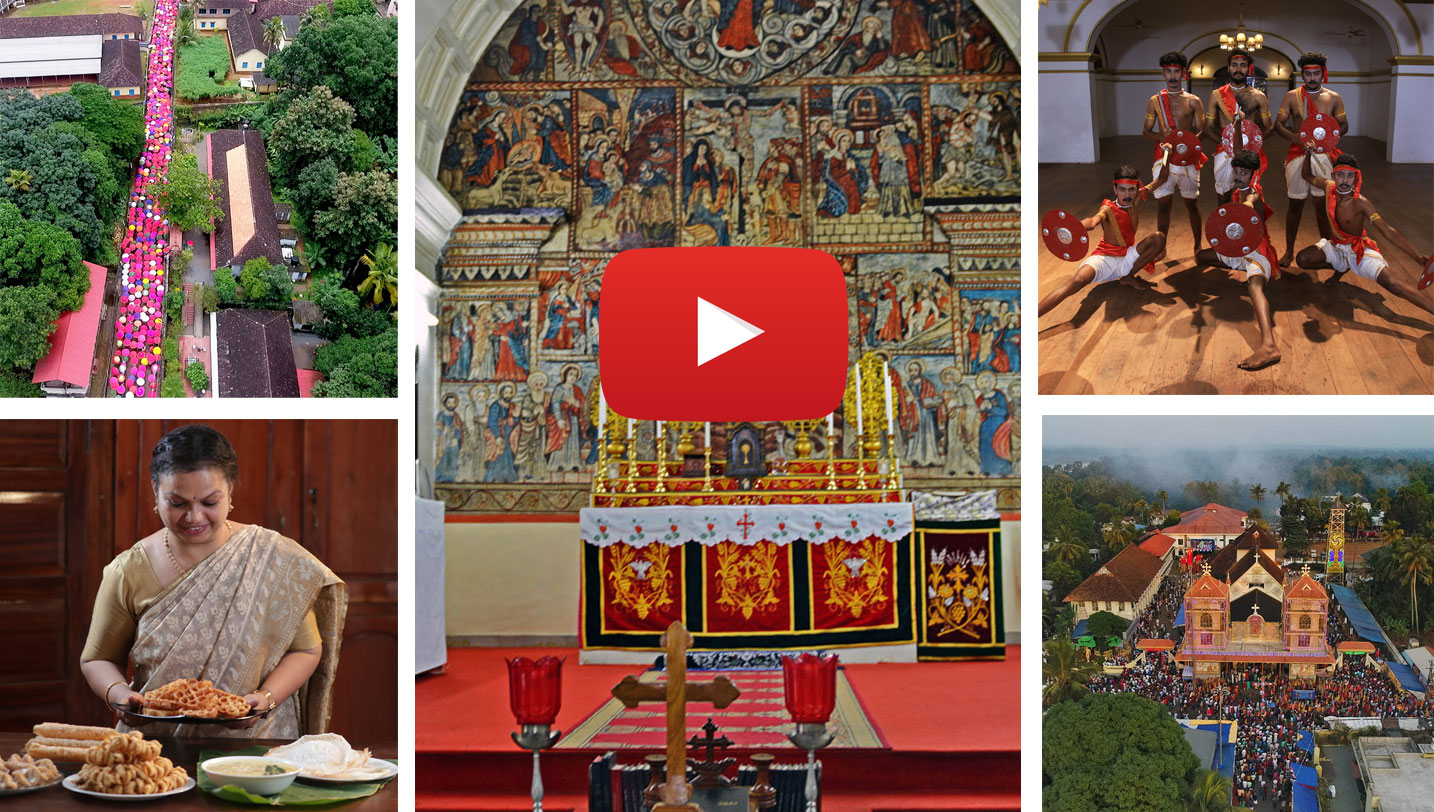The Tradition of St. Thomas
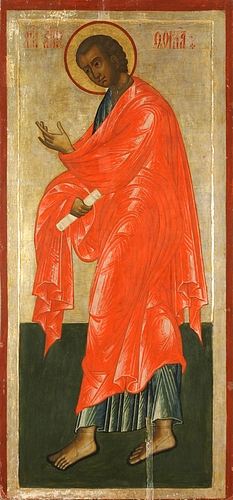
The tradition of St. Thomas
The faith in the religion that was handed down by generations of Christians, gives stronger support to the fact of the missionary activities of St. Thomas, than any historical evidence. Evidence regarding the existence of a large Christian community in South India during the early centuries has been recovered from Arthat, Palayoor, Muttuchira, and Neelamperoor. The inscription of a cross, on a stone that was found under a huge stone cross at Arthat in 1991, and statue of a king wearing a rosary and wielding a scepter, secured from the premises of the Neelamperoor temple, are considered as evidence from the first century.
Trade links
Kerala had foreign trade links even before the age of Christ. Prominent among the traders were Jews, Arabs, Babylonians, Assyrians, Phoenicians, Greeks, Chinese, and Romans. Such trade links existed even during the time of the Israeli ruler Solomon (BCE 977- 937) (Majumdar, R.C., The History and Culture of the Indian People, Vol. II). The Old Testament, 1 Kings 10: 21-22 says that during those days, Hiram, the King of Tyre, sent ships to the East for trade, and these ships returned with gold, silver, ivory, monkeys and peacocks once every three years. The merchandise brought by the ships of Tyre reached Palestine and made King Solomon the richest of all the rulers of the world. The ships of King Hiram that brought gold from Ophir brought sandalwood and precious stones too. King Solomon used the sandalwood for constructing pillars of the temple of Jehovah and of his palace, and for making harps and psalteries for his singers. It is said that such high-quality sandalwood was never seen again. (The Bible, Old Testament, 1 Kings 10:11-13). This trade was carried out from the port of Ophir. There is an argument that Ophir might have been a town in the southern coast of Arabia and South India did not have direct trade links with foreign countries. In that case the Arabs must have been the intermediaries for the distant trade with Kerala. However, The Malabar Manual written by William Logan says that Ophir was near Beypore in Kozhikode. Muziris (Muriyakode), Purakkad, and Nelki were the main port cities of Kerala. There were also smaller ports like Kollam, Ponnani, Kadalundy, and Udayamperoor on the western coast, as per the writings of Ptolemy and Pliny.
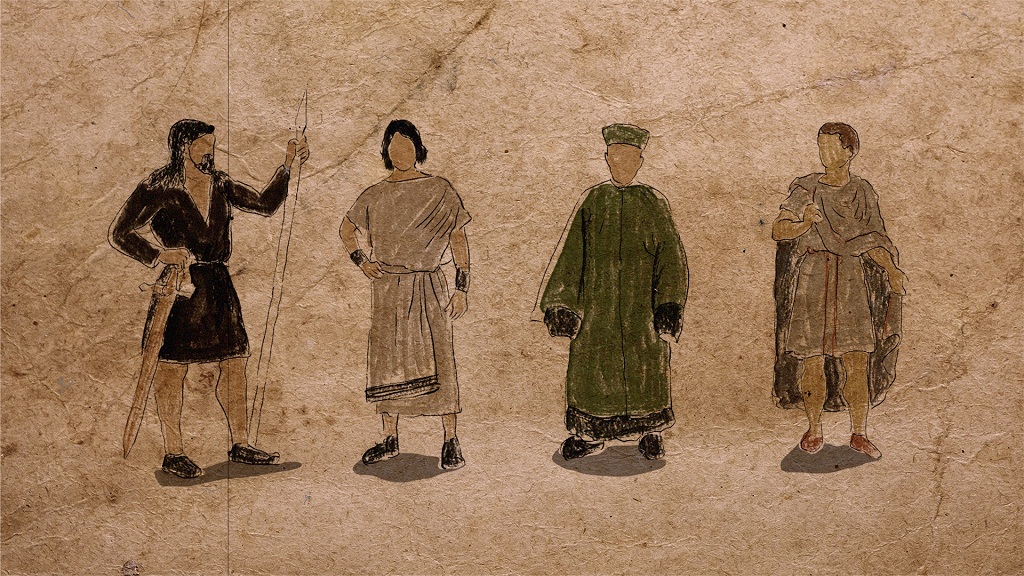
Trade groups:
Phoenicians had reached the coast of Kerala in BCE 2000. Since then, Arabs, Persians, and Egyptians started concentrating on the ports in Kerala for trade. Yachts used to reach Kerala from various destinations in 40 days. Arabs' monopoly over the trade came to an end with Hippalus, a Greek mariner, detecting the course of the south-western wind on a sea route, which was kept a secret by the Arabs. He was able to reach Kodungalloor from Galla Bay in 40 days along this sea route. Detection of the course of monsoon winds revolutionized sea journey and Greeks, Romans, Chinese, Arabs, and Persians joined the distant trade. However, until the arrival of Vasco da Gama, Arab traders maintained their supremacy in the trade with Kerala.
The Influence of Black Gold
Pepper was the main commodity exported from Kerala. It was the Greeks and Romans who popularized the use of pepper in Europe. They used pepper for preserving food and also as a medicine. Though in Kerala, it was a crop used only for medicinal purposes, it had a much more important place in Europe. People of Europe needed the help of pepper to survive the winter. It was used with salt for preserving meat for consumption during the four winter months. Pepper trade was almost as important as gold trade. It is no exaggeration to say that Europeans started colonization for procuring pepper from Kerala. Pepper was mainly exported from Muziris. Both Pliny and Ptolemy have written about it. Kodungalloor and Kollam were important ports during those days.
Many Jewish colonies existed in the precincts of the present Kodungalloor during those days. Later the Jews got converted to Christianity. Most of the trade relations were established with those who embraced Christianity. The religious ties between West Asia and South India gave more energy to the trade. Documents say that during the first century there was a church of Augustus in Muziris and about a thousand Roman soldiers were posted there for the protection of trade. This was at a time when Christianity was gaining ground in the State. Trade groups were constituted by merchants, missionaries, and soldiers. Religion too was spread along with the trade.
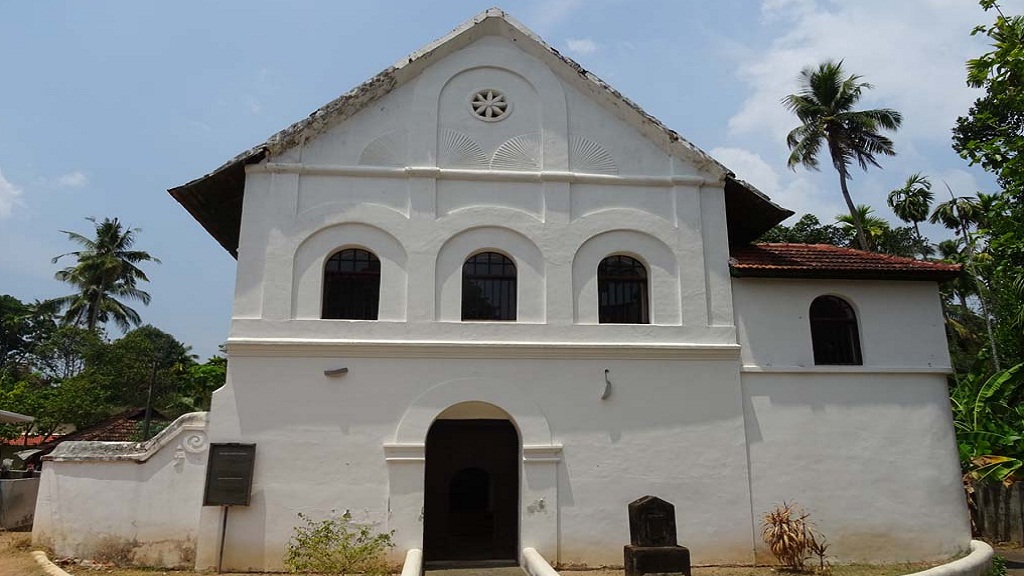
Migration of Jews:
It is widely believed that when Romans destroyed the Jerusalem Church in CE 68, a band of Jews migrated to Kerala. Certain historic documents confirm the presence of Jews in Kerala even before that. Frankincense, cinnamon and other spices used as offerings in Jewish synagogues were produced in Kerala. The destruction of the Jerusalem Church and religious persecutions had prompted them to migrate to Kerala in large numbers. It must have been from Palestine that thousands of Jews migrated to Kerala, set up markets, and started living here. The first propagation of Christianity might have taken place among them. (Majumdar, R.C., The Jewish Christians of India). There is nothing wrong in believing that St.Thomas preached among his own people whom he had felt, were lost. Some historians argue that the Jewish customs and conventions reached the Christians through the Bible and not through religious conversion.
The copper plates presented by King Bhaskara Ravi Varman I (CE 962-1020) are the oldest documents regarding the Jews of Kerala. It is believed to have taken place in CE 1000. Rabi Benjamin of Tudela who visited Kerala during CE 1167 has described the Israelites of Kollam. He refers to the thousands of moderately complexioned Jews who lived there and their sound knowledge of the teachings of Moses and the prophets. This is quoted by Hendry Lord in Jews in India and the Far East.
Italian traveller Marco Polo has made a mention of the Jewish colonies that existed during the 13th century. S. Koder establishes that, following the destruction of the second church in Palestine, more than 1,000 Jews reached Kodungalloor in CE 70 (Koder, S., Kerala and Her Jews). This migration has historical backing since Malabar had trade links with the Jews even during the time of King Solomon (Davis, F.S., Cochin and British India). It is believed that a section of such Jews got converted to Christianity during the visit of St. Thomas. During the early days of Christianity, St. Paul preached the religion among Jews and in Synagogues. Similarly, St. Thomas is believed to have preached among the Jews in their colonies in Kodungalloor. Staying in the Jewish colonies St. Thomas is said to have converted the regional ruler along with 400 Hindus and 40 Jews to Christianity (Thomas, P., Christians and Christianity in India and Pakistan). It has been established that the churches set up by St. Thomas was either in Jewish colonies or in their precincts (Rowley H.H., Dictionary of the Bible). The converted King might have been the Jewish ruler of Kodungalloor. Christians, Muslims, and Jews claim Kodungalloor as their first settlement in the state. Jews had seven major settlements in South India. They were Kodungalloor, Palayoor, Paravur, Kollam, Muttom, Chenad, (Chendamangalam) and Anchi Kaimal (Koder, S., Kerala and Her Jews). All these were major centers of Christian migration. Moreover, the majority of the churches set up by St. Thomas were in these settlements.
Syrian Christians of Kerala
The original Christian tradition, followed by the Syrian Christians of Kerala, is described as the path of St. Thomas. In order to establish their distinct identity, they reiterated that the tradition of St. Thomas, which they followed, was different from that of St. Peter, which was introduced by the Portuguese at the Synod of Diamper in 1599, by which most of the Christians of Kerala were brought under Rome. The Syrian Christians of Kerala were known by that name because Syriac was the language they used for their holy rites. They were also called Nasrani Mappilahs. The word `Mappilah’ was used only for those from abroad. Jews were known as Mappilah Jews. In North Malabar, Muslims were also known as Mappilah Muslims. ‘Nasrani’ means those who follow Nazarene, a name of Christ who was born in Nazareth.
- The Tradition of St. Thomas
- The arrival of St. Thomas
- Seven and half Churches
- Post St. Thomas arrivals
- The scenario before the arrival of Gama
- Missionary Activities
- Descriptions of St. Thomas Christians
- The Padruodo
- Portuguese Forts
- Synod of Diamper
- Latinization of Churches
- Coonan Cross Oath
- Post Koonan Kurissu
- Establishment of churches
- Starting of Seminaries
- Anglo Indians
- Migrations to Malabar
